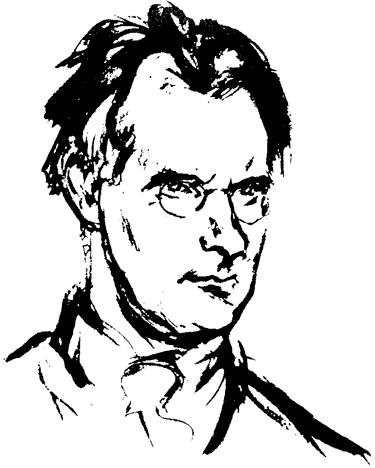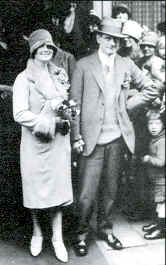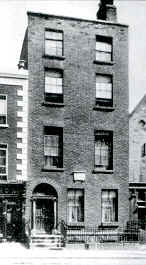|
Loading
|
|
|

Sean O'Casey
Works
- Full length plays (dates are of first performance):
- The Shadow of a Gunman (Abbey, Dublin 1923), Juno and the Paycock (Abbey 1924), The Plough and the Stars (Abbey 1926), The Silver Tassie (London 1929), Within the Gates (London 1934), The Star Turns Red (London 1940), Red Roses for Me (Olympia, Dublin 1943), Purple Dust (Liverpool 1945), Oak Leaves and Lavender (London 1947), Cock-a-Doodle Dandy (Newcastle-upon-Tyne 1949), The Drums of Father Ned (Lafayette, Indiana 1959), The Bishop's Bonfire (London 1961)
- Volumes of autobiography:
- I Knock at the Door (1939), Pictures in the Hallway (1942), Drums Under the Windows (1945), Inishfallen, Fare Thee Well (1949), Roses and Crowns (1952), Sunset and Evening Star (1954)
- One-act plays:
- Kathleen Listens In (Abbey) 1923), Nannie's Night Out (Abbey 1924), A Pound on Demand (1932), The End of the Beginning (Abbey 1937), Hall of Healing, Bedtime Story, Time to Go (1951), Behind the Green Curtains, Figuro in the Night, The Moon Shines on Kylenamoe (1961)
- Other work includes:
- The Story of Thomas Ashe (1918), The Story of the Irish Citizen Army (1919) Windfalls (poems, short stories, one-act plays, 1934), The Flying Wasp (essays, articles, reviews, 1937), The Green Crow (essays, 1956), Under a Coloured Cap (articles, 1963)
-

O'Casey versus Ireland
O'Casey's art sprang from a creative antagonism between himself and factions of his emerging country. Here is a chronology:
- 1880
- 30 March: Born John Casey in Dublin, the youngest of eight children of a respectable Protestant clerk.
- 1886
- His father dies, later to be replaced by a series of political or artistic mentors. Suffering reduced circumstances, he becomes deeply devoted to his mother.
- 1894
- Sent to work at fourteen, he educates himself from his father's books, particularly Shakespeare.
- 1903
- Becomes a labourer for nine years on the Great Northern Railway.
- 1906
- Involves himself with Nationalist movements, as Secretary of the Irish-speaking Gaelic League and a member of the Irish Republican brotherhood.
- 1913
- Secretary of the Women and Children's Relief Fund during the Dublin general strike, he considers the labour leader, Larkin, the "Prometheus Hibernica".
- 1914
- Secretary of the Irish Citizen Army, a workers' defence force. Dissociates himself from the Nationalists, bitterly criticising their middle-class leadership. Next resigns from the Citizen Army after quarrelling with Larkin.
- 1916
- Takes no part in the Easter Rising, although deeply affected by its outcome. This internal conflict later takes brilliant artistic effect in his Dublin trilogy.
- 1919
- His mother dies. The Abbey rejects his first play.
- 1920
- At forty, leaves home for the first time, disgusted by his brother's drinking.
Becomes a tenement dweller in Mountjoy Square, is raided by the Black and Tans.
Moves to North Circular Road, where his suffering neighbours inspire the plot
of Juno and the Paycock. 1923 The Shadow of a Gunman
premieres, with Free State troops protecting the Abbey Theatre during a day
of Die-Hard mourning.

- 1924
- Juno and the Paycock is an unprecedented success at the Abbey. O'Casey is still a labourer, mixing concrete.
- 1926
- Riots erupt at a performance of The Plough and the Stars, over
its realistic depiction of the Easter Rising and implicit socialist disillusionment
with nationalism. At 46, O'Casey first leaves Ireland. Juno and the Paycock's
success in London makes him an admired figure in fashionable society.

- 1927
- Marries actress Eileen Carey Reynolds (who played Nora in The Plough and the Stars in London).
- 1928
- The Abbey rejects The Silver Tassie, an anti-war play with an expressionistic second act. Declaring literary war on Yeats, O'Casey decides to live permanently in exile.
- 1929
- C B Cochran presents The Silver Tassie, with Charles Laughton, in London.
- 1930
- Film of Juno and the Paycock, directed by Alfred Hitchcock, released. Copy of the film burned in the street by Irish nationalists in Limerick.
- 1935
- The Silver Tassie opens at the Abbey. O'Casey visits Dublin for the last time.
- 1939
- His first autobiography, I Knock at the Door, is banned by the Irish Censor.
- 1942
- His second autobiographical volume, Pictures in the Hallway, is banned by the Irish Censor.
- 1958
- O'Casey bans all professional productions of his plays in Ireland after the Archbishop of Dublin, on hearing that O'Casey's play The Drums of Father Ned is to be performed, refuses to say a mass for the Dublin Festival.
- 1959
- Cock-a-Doodle Dandy has its London premiere at the Royal Court.
- 1964
- Lifts ban on Irish productions so that The Abbey can present Juno and the Paycock in the World Theatre Season in London.
- 18 September: dies in Torbay. His ashes are dispersed in the Garden of Remembrance at Golders Green Crematorium, between the Shelley and Tennyson rose beds.
- 1987
- Samuel Beckett recommends Juno and the Paycock to be part of New York's International Festival of Arts, a sign of his "enduring gratitude and homage" to his "great compatriot".
